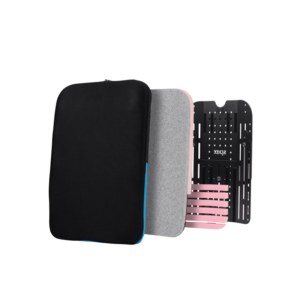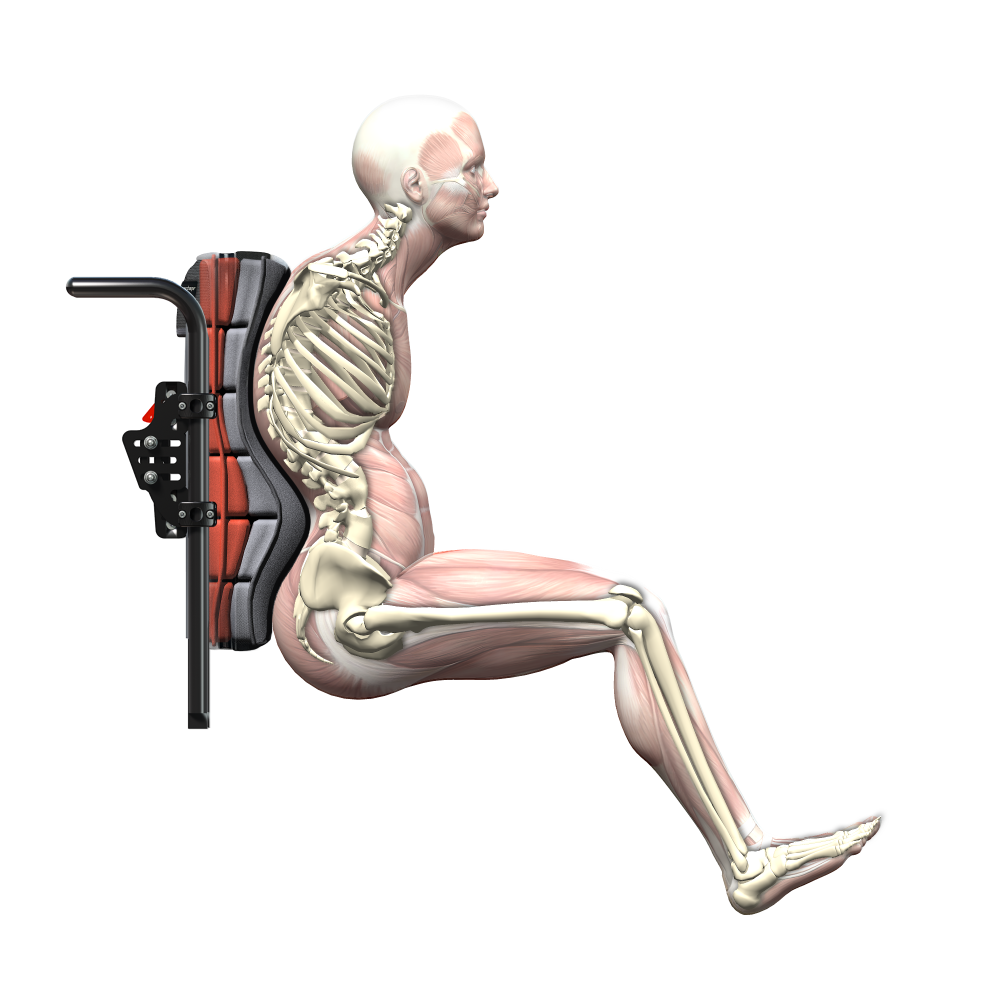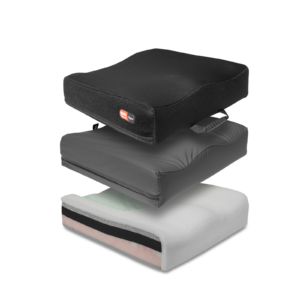| Posterior Pelvic Tilt |
- Decrease thigh to calf angle
- Drop front of cushion down/build up at rear for sloping seat surface
- Provide more posterior pelvic support through backrest
- Create biangular shaping in backrest to accommodate asymmetries
- Check depth of cushion – may be too deep
|
Spex Cushion
Spex Backrest |
| Anterior pelvic tilt/Lordosis |
- Neutral alignment of the pelvis
- Encourage more weight bearing on ischial tuberosities
- Position hip belt over ASIS
- Create a rearward sloping seat and carefully set up the back angle to reduce the tendency to lumbar Lordosis
- Provide contouring in the backrest to support the users back
- Using an adapted tray to form an anterior support for the trunk is often very effective and functional for the user
|
Spex Cushion
Spex Backrest |
| Tight hamstrings |
- Drop front of cushion down/build up at rear for sloping seat surface
- Open seat to back angle
- Decrease thigh to calf angle with footplate position
|
Spex Cushion |
| Limited hip flexion (one side or both) |
- Accommodate fixed limitation in hip flexion by wedging cushion sloping to the front
|
Spex Cushion |
| Sliding forward on seat |
- Provide increased pre-ischial shelf build-up
- Stabilize pelvis using appropriately angled pelvic belt
|
Spex Cushion |
| Extensor Thrust |
- Increase hip and knee flexion
|
Spex Cushion |
| Leg length discrepancy |
- Leg discrepancy cut-out in cushion
|
Customised Spex Cushion |
| Pelvic rotation |
- Create build-up in pre-ischial support under affected pelvis
- Contour the back surface to support pelvis if fixed
- Maximise use of hip belt to control forward side
- Check dimensions of chair and components. A chair that is too wide, for example, can facilitate pelvic rotation
- Contoured cushions with good leg troughs
- Appropriate lower back support is preferable to a canvas back which may mould to the rotated pelvis
|
Spex Cushion
Spex Backrest |
| Windsweeping |
- Hip and thigh lateral supports
- Provide more adductor/abductor support on the cushion with higher contouring/deeper leg troughs
|
Spex thigh supports
Customised Spex Cushion |
| Hip adduction |
- Medial knee support/pommel
- Deeper leg troughs
- Customised adduction shaping in cushion
|
High Contour Spex Cushion
Spex medial knee support |
| Hip abduction |
- Lateral knee supports/thigh guides
- Deeper leg troughs
- Customised abduction shaping in cushion
|
High Contour Spex Cushion
Spex thigh supports |
| Pelvic obliquity |
- Ensure correct seat dimensions, arm support positioning etc.
- Ensure a level base of support for the cushion
- If obliquity is flexible, build-up under low side to correct
- If the obliquity is fixed, compensate by building up the high side and/or lowering the low side to even out contact area throughout the cushion
- Ensure sufficient trunk support for level of disability and prescribe proactively
|
Spex Cushion
Spex Backrest |
| Painful or dislocated hip |
- Use softer materials under and/or around hip
- Avoid lateral contact with hip
|
Spex Cushion |
| Pressure risk on cushion |
- Most wheelchair users spend many hours in their wheelchairs. They have may full sensation but are often unable to change position independently or effectively.
- With a user that has pelvic deformities, often the core reason behind their pressure concerns is coming from poor positioning and loading of the pelvis on the cushion. An adjustable cushion that provides ability to load the pelvis properly will give them improved posture and function.
- A suitable high-pressure redistribution cushion used with the tilt-in-space function can promote skin integrity and help users independently maintain comfort.
|
High Contour Spex Cushion |
| Scoliosis with/without rotation |
- Lateral support via thoracic pads will assist, but the condition should be managed by on-going assessment etc.
- Some users find harnesses give them more confidence and trunk stability when they are out and about, particularly in vehicles or when negotiating uneven ground, slopes and ramps.
- Scoliosis can be managed in the early stages with 2-point, usually symmetrical, lateral contact.
- If the condition is more advanced it may be necessary to use 3-point contact with support lower down at the pelvis level
- Check for pressure areas and add extra padding/gel or increase the surface area if necessary with larger pads
- Swing-away laterals significantly help with transfers and some activities of daily living.
- The contouring profile of the backrest is also important and should encourage the maintenance of the natural curves of the spine.
|
Spex Backrest
Lateral selection |












